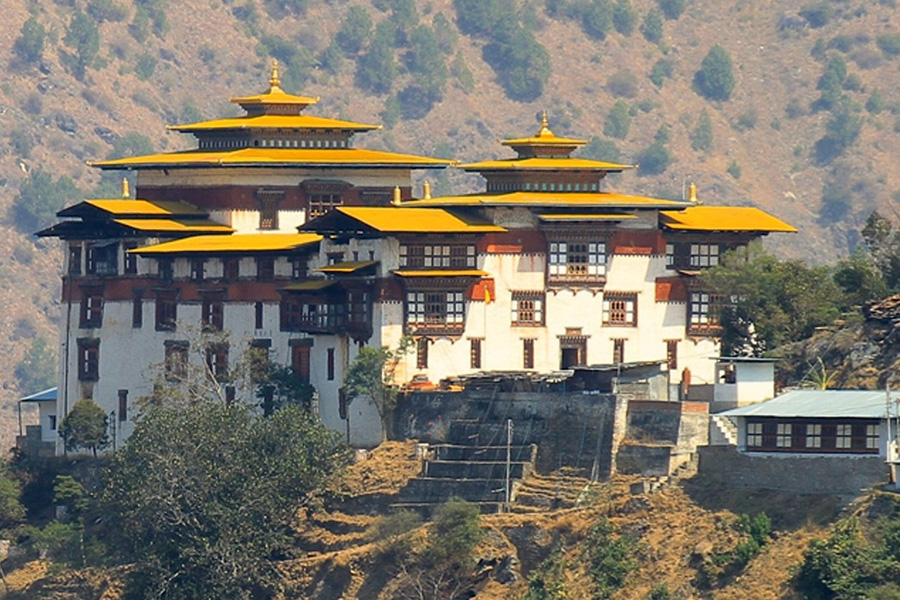Trashigang Dzong

Trashigang Dzong, meaning ‘The Fortress of the Auspicious Hill,’ stands as one of the largest ancient fortresses in Bhutan. Positioned strategically on a mountain ledge with steep cliffs on three sides, it commands a breathtaking view of the confluence of the Drangme Chhu and Gamri Chhu rivers. Initially built in 1659 to ward off Tibetan invasions, the fortress has since served as the seat for the district monastic body and administration of Trashigang district.
Legend has it that retreating Tibetan armies, upon witnessing the Trashigang Dzong, regarded it as a “Sky Dzong and not on the ground.” Over the course of 300 years, it has remained the political stronghold of eastern Bhutan. Dudjom Jigdral Yeshe Dorje consecrated and named the dzong as Trashigang.
During the 1962 Sino-Indian War, Indian soldiers passing through eastern Bhutan were required to deposit their rifles at the dzong’s armoury. These rifles remain in the dzong to this day. The dzong, accessible only from the north via a narrow road blasted through the cliff-side, suffered severe damage in the 2009 earthquake. Extensive renovations were undertaken and completed in 2019 to preserve its original structure.
Inside Trashigang Dzong, six lhakhangs (temples) hold significance. The 1st-floor goenkhang showcases paintings of a yeti, while another chapel is dedicated to Choegi (Yama) Gyelpo, the wrathful aspect of Chenresig. Lama dances are performed to appease Yama, the god of death and the king of law. Trashigang hosts the annual three-day Tshechu festival in November or December, a popular cultural celebration featuring various traditional dances.
Contact Us
- Alo Drukpa Tours & Treks
- Thimphu : Bhutan
- P.O Box : 1568
- +975 2 350066
- +975 17618433
- alodrukpatourandtreks@gmail.com
